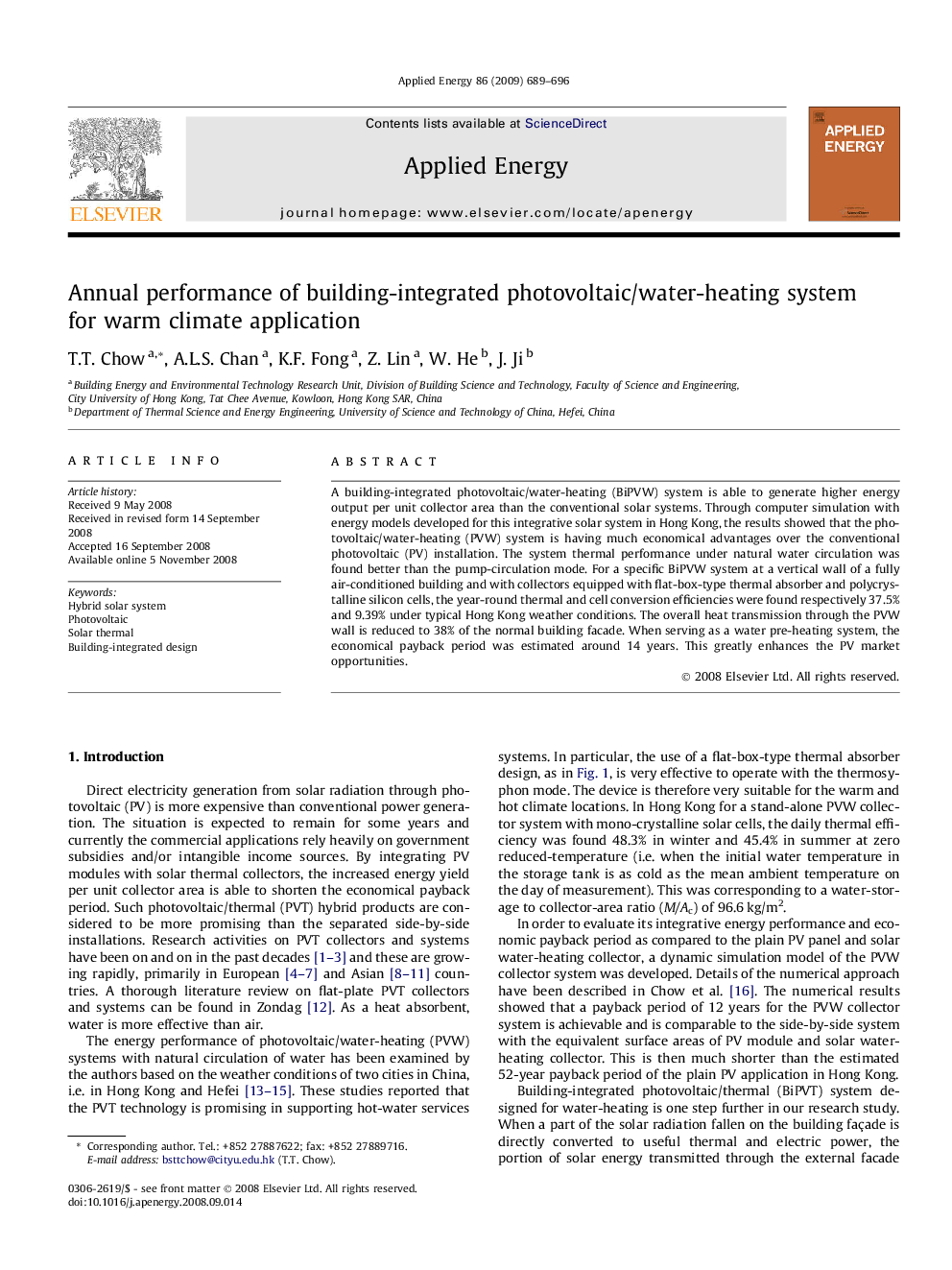| Article ID | Journal | Published Year | Pages | File Type |
|---|---|---|---|---|
| 245158 | Applied Energy | 2009 | 8 Pages |
A building-integrated photovoltaic/water-heating (BiPVW) system is able to generate higher energy output per unit collector area than the conventional solar systems. Through computer simulation with energy models developed for this integrative solar system in Hong Kong, the results showed that the photovoltaic/water-heating (PVW) system is having much economical advantages over the conventional photovoltaic (PV) installation. The system thermal performance under natural water circulation was found better than the pump-circulation mode. For a specific BiPVW system at a vertical wall of a fully air-conditioned building and with collectors equipped with flat-box-type thermal absorber and polycrystalline silicon cells, the year-round thermal and cell conversion efficiencies were found respectively 37.5% and 9.39% under typical Hong Kong weather conditions. The overall heat transmission through the PVW wall is reduced to 38% of the normal building facade. When serving as a water pre-heating system, the economical payback period was estimated around 14 years. This greatly enhances the PV market opportunities.
